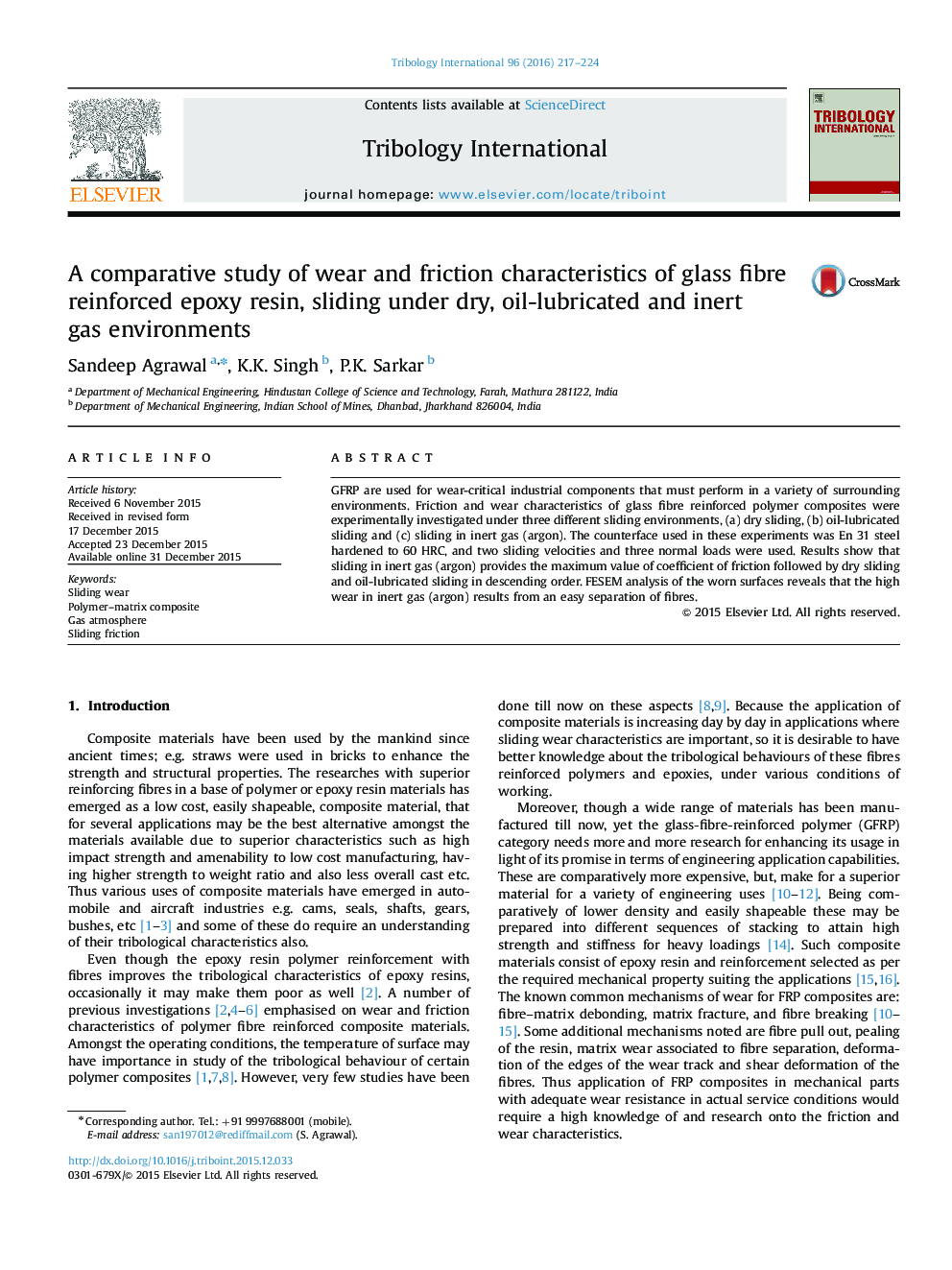| Article ID | Journal | Published Year | Pages | File Type |
|---|---|---|---|---|
| 614196 | Tribology International | 2016 | 8 Pages |
•Friction and wear of GFRP are investigated in environments as dry, oil-lubricated and argon.•Results show highest value of cof. in argon followed by dry and oil-lubricated.•FESEM analysis of worn surfaces shows that argon results an easy separation of fibres.Therefore in argon during the process of wear greatest values of wear rate are obtained.
GFRP are used for wear-critical industrial components that must perform in a variety of surrounding environments. Friction and wear characteristics of glass fibre reinforced polymer composites were experimentally investigated under three different sliding environments, (a) dry sliding, (b) oil-lubricated sliding and (c) sliding in inert gas (argon). The counterface used in these experiments was En 31 steel hardened to 60 HRC, and two sliding velocities and three normal loads were used. Results show that sliding in inert gas (argon) provides the maximum value of coefficient of friction followed by dry sliding and oil-lubricated sliding in descending order. FESEM analysis of the worn surfaces reveals that the high wear in inert gas (argon) results from an easy separation of fibres.
